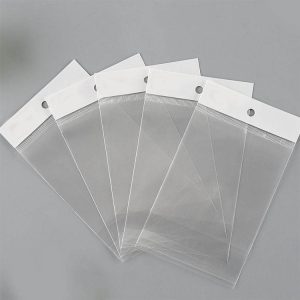Introduction to Self-Adhesive Bags
What is a Self-Adhesive Bag?
Self-adhesive bags have a built-in strip of adhesive that allows the bag to stick to surfaces for display or storage purposes. They offer convenience and customization options compared to traditional bags and packaging.
Definition & Overview
A self-adhesive bag is a bag or pouch with a strip of glue on the backside. To use, simply peel off the backing paper and press the adhesive firmly onto any clean, smooth surface. The bags stick without tacks, tape or ties.
Common Uses
Self-adhesive bags are commonly used for retail displays, packaging, and logistics. They allow products or items to be neatly displayed or grouped. The bags can be printed with branding, directions or product information.
Benefits of Using Self-Adhesive Bags
Self-adhesive bags provide some unique advantages over regular non-adhesive bags:
Convenience
The built-in adhesive offers a fast, easy way to mount bags for display without tools or hardware required. Peel and stick application saves time.
Customization
Bags can be custom printed with graphics, text or barcode labels for a customized and professional look.
Cost Savings
Adhesive bags eliminate the need for additional materials like ties, hooks or tacks to hang bags. This can reduce overall packaging costs.
Types of Self-Adhesive Bags
Self-adhesive bags come in a range of materials, each with their own properties:
Paper
Kraft paper and other paper adhesive bags have a natural look and feel. They are recyclable and biodegradable. However, paper is less durable.
Plastic
Plastic polymer bags like polypropylene are moisture-proof and rigid. They resist tearing for sturdy packaging use. Recyclable options are available.
Foil
Foil bags provide an opaque, metallic appearance. The aluminum material acts as a barrier to light, gas and moisture. However, foil cannot be printed on.
Choosing the Right Materials
Consider the strength, printability and appearance needs for your application when selecting self-adhesive bag materials:
Strength
If the bag will hold heavy contents, plastic or multilayer laminated bags offer the greatest durability. Paper has the lowest tear resistance.
Printability
For the highest print quality with vibrant inks and fine details, opt for plastic bags. Paper also prints well. Foil cannot be printed on directly.
Aesthetics
Kraft paper gives a natural, craft-like appearance. Plastic bags come in clear, colored and metallic finishes. Foil bags provide a reflective, upscale look.
Bag Styles and Sizes
Self-adhesive bags come in a variety of standard or custom styles:
Flat Bags
Flat adhesive bags with a single sealing strip are ideal for holding lightweight items like cards, flyers and pamphlets.
Gusseted Bags
Gusseted bags have an expandable folded side for increased volume. Useful for medium sized contents like food packages.
Custom Shapes & Sizes
Completely customized adhesive bags are possible, with unique dimensions or die cut shapes for specific products.
Self-Adhesive Bag Applications
Self-adhesive bags can be used creatively across many industries:
Retail Packaging
Adhesive bags allow retailers to reseal opened packages or bundle related items securely.
Food Service
Restaurants can package soups, sandwiches and leftovers in self-sealing bags for grab-and-go meals.
Industrial Uses
On assembly lines and in workshops, contents can be organized into adhesive pouches by type or process order.
Design and Printing Tips
Follow these guidelines when designing custom artwork for printed adhesive bags:
High-Resolution Artwork
Supply artwork in a high resolution 300dpi or higher for sharp image printing quality.
Minimal Text
Avoid too much small text which is hard to read on bags. Use prominent headlines and minimal body text.
Test Print
Ask suppliers for an inexpensive test print before finalizing designs to check position and quality.
Applying Adhesive Backing
Self-adhesive backing can be applied to bags manually or by machine:
Manual Application
For short runs, adhesive tape can be applied to bag rolls by hand. This allows flexibility in bag dimensions.
Machine Application
Automated applicators allow high-volume, consistent adhesive application for large production runs.
In summary, self-adhesive bags provide convenience, customization, and cost savings over traditional packaging. Choosing the optimal materials and styles to meet your specific use case results in professional, functional adhesive bags perfect for retail, industrial, and food service needs.
FAQs
Q: How strong is the adhesive on self-adhesive bags?
A: It depends on the adhesive used, but most provide a reliable bond to smooth surfaces like glass, plastic, or metal while still allowing clean removal without damage. Adhesion strength will be weaker on rough or textured surfaces.
Q: Are self-adhesive bags reusable?
A: They can be reused a limited number of times if the adhesive remains tacky and the bag itself is still intact. However, adhesive strength will eventually degrade with repeated sticking and unsticking.
Q: What surfaces do self-adhesive bags stick to?
A: Smooth, non-porous surfaces like windows, appliances, and laminated shelves that are clean and dry allow the best adhesion. Avoid textured surfaces like wood or concrete.
Q: Can self-adhesive bags be microwaved?
A: It depends on the material. Some plastic adhesive bags may be microwavable, but paper and foil bags can only be used for room temperature contents. Check specifications first.
Q: How are self-adhesive bags printed on?
A: Digital printing with CMYK inks allows full-color graphics and text. Flexographic printing works for solid colors and logos. Thermal transfer printers can print variable barcode labels.
Q: Can you write directly on self-adhesive bags?
A: Yes, writing on the bags is possible depending on the material. Plastic accepts permanent markers. Dark inks or pencils work on kraft paper. Foil cannot be written on directly.







Leave A Comment